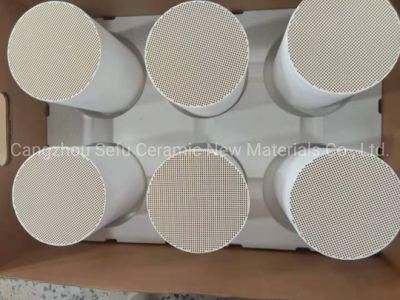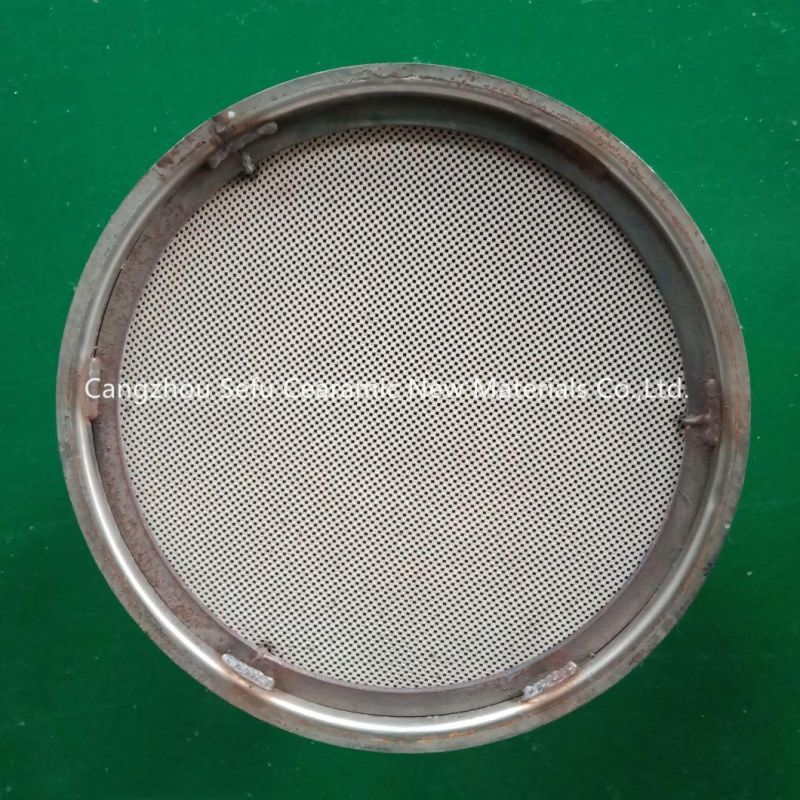
Diesel Particulate Filter with Ceramic Catalyst for Removing The Black Smoke
Cangzhou Sefu Ceramic New Materials Co., Ltd.- After-sales Service:3years
- Warranty:3years
- Type:Catalytic Converter
- Body Material:Steel
- Discharge Standard:Euro III
- Certification:ISO9001
Base Info
- Model NO.:SF-DPF
- Noise Source:Mechanical Noise and Combustion
- The Noise of Engine:Mechanical Noise
- Automobile Chassis Noise:Transmission Noise
- Component:Catalytic Converter
- Main Market:East Asia
- Product Name:Diesel Particulate Filter
- Size:Dia 143.8*152.4mm
- Hole Density:400 Cpsi
- Materials:Cordierite Honeycomb Ceramic
- Transport Package:Cartons with Pallet
- Specification:1.1*1.1*0.12
- Trademark:SEFU
- Origin:China
- HS Code:6909190000
- Production Capacity:100000pieces ,Per Year
Description
Basic Info.
Model NO. SF-DPF Noise Source Mechanical Noise and Combustion The Noise of Engine Mechanical Noise Automobile Chassis Noise Transmission Noise Component Catalytic Converter Main Market East Asia Product Name Diesel Particulate Filter Size Dia 143.8*152.4mm Hole Density 400 Cpsi Materials Cordierite Honeycomb Ceramic Transport Package Cartons with Pallet Specification 1.1*1.1*0.12 Trademark SEFU Origin China HS Code 6909190000 Production Capacity 100000pieces /Per YearProduct Description
Dia 144*152,400 cpsi Cordierite Honeycomb DPF for Generator netDescription:
DPF is a special honeycomb ceramic filter which has wall-flow structure.
It uses the micro- pores on its inner walls to remove the particulate matter from the exhaust gas of diesel engine.
With increasing appearance of diesel engine automobile, the particulate from emission, mainly carbon, enhances the pollution to the environment.Regulation for diesel engine, stipulating the particulate in diesel passenger cars emission should meet the criterion: below 2.0g/mile. The diesel particulate filter is able to filter above 80% carbon smoke particulate .For practical application, it would be a great help to solve the problem of air pollution.
As one of the leading technologies to meet current PM emission standards, a diesel particulate filter (DPF)has been developed for the exhaust after-treatment. Most of the commercially available DPFS are ceramic honeycomb filters.However, due to the limitation of the DPF volume, whose porosity is about 0.4, the filter would be plugged with particles, which causes an increase in the filter backpressure [6,8,9]. If the backpressure is too high, the engine may stall or the fuel consumption rate may increase. An establishment of a new PM treatment technology without recourse to the catalyst is urgently required. Thus, it is important to develop a non-catalytic exhaust after-treatment. There is an alternative, the silicon carbide (SiC) ceramic foam filter.
Installation Method:
The product is installed in the exhaust system of a diesel engine and uses a wall-flow method to filter particulate five (PM) with a removal efficiency of up to 98%. It is an effective means to control the black smoke phenomenon of exhaust gas, and it can also greatly reduce noise pollution. We can produce various types of traps with a hole density of 100 mesh and 200 mesh. The product can meet the emission standards of EURO v, EURO vi, EPA, etc., and can be widely used in diesel vehicles and general machinery.
Features :
1. The black smoke treatment and deodorization effect is obvious, and the opacity is close to zero
2. The filter element used in the system has a long service life
3. The purification system is automatically started, controlled and easy to operate
4. Intelligent regeneration control system to reduce energy consumption
5. The structure is sturdy, and the shell package is not modified
6. Assembled structure, easy to install
Structure and working principle:
DPF substrate has the special structure of one end open and other end closed.
It has many micro pores on its inner walls. These micro pores allow the gas going through the wall, but reject most of the particulate matter in the exhaust gas. When the exhaust gas from diesel engine enters into one DPF channel from the open end, due to the closed other end, the exhaust gas is forced to go through from the micro pores of the inner wall, and exhaust out from the neighbor open channel. In this process, those particulate matters which have bigger size than these micro pores are captured on the inner wall, and hence achieve the filtering effect.
1. The DPF can capture more than 95% particulate matter.
2. The porosity of DPF is more than 50%.
Product show:


